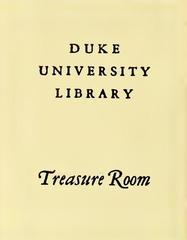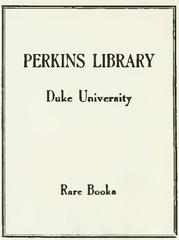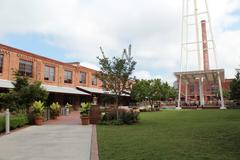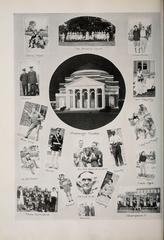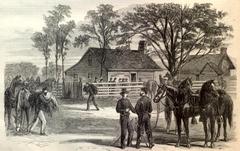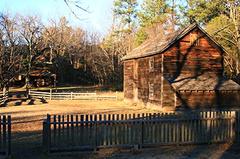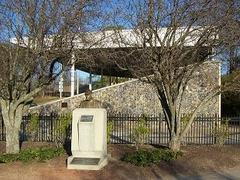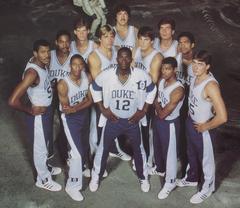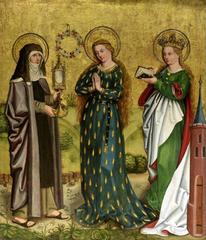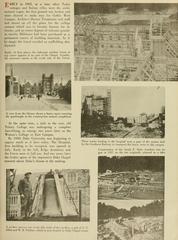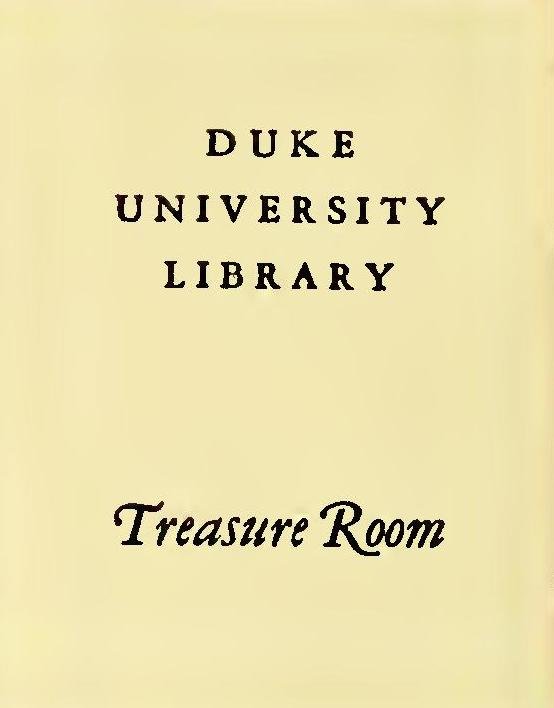
Duke University Libraries Visiting Hours, Tickets, and Guide: Durham Historical Sites
Date: 14/06/2025
Introduction
Nestled in Durham, North Carolina, the Duke University Libraries are a cornerstone of academic excellence, cultural heritage, and architectural grandeur. Drawing students, researchers, history enthusiasts, and visitors to Durham’s historic sites, these libraries reflect Duke’s evolution from its 19th-century roots as Trinity College to its status as a world-class research university. With signature Gothic architecture alongside modern facilities, the libraries house millions of volumes, rare manuscripts, and special collections, while providing inclusive spaces and programs for the wider community. This guide provides everything you need to plan your visit—from hours and accessibility to highlights of collections, nearby attractions, and practical visitor tips (Duke University Libraries; Duke’s Architecture; Rubenstein Library).
Table of Contents
- Introduction
- Historical Overview
- Architectural Significance
- Collections and Facilities
- Visiting Duke University Libraries: Practical Information
- Renovations & Digital Access
- Libraries’ Role in Culture & Community
- Frequently Asked Questions (FAQ)
- Conclusion
Historical Overview
Early Origins and Foundations
The Duke University Libraries’ origins reach back to the 1830s, when Brown’s Schoolhouse, later Trinity College, established its first collection of donated books (Duke University Libraries Timeline). Despite modest beginnings in Randolph County, the college’s library set a foundation for scholarly growth (Duke University History: Randolph County Years).
Move to Durham and Growth
The relocation to Durham in 1892 marked a new era. The founding of the Trinity College Historical Society that year intensified collecting efforts and preservation of regional documents (Trinity College Historical Society). As Trinity College flourished, so did its library’s size and reputation.
Transformation into Duke University and Library Expansion
The 1924 transformation of Trinity College into Duke University, underwritten by the Duke family’s endowment, led to rapid expansion (Duke University Timeline). The opening of the General Library (now William R. Perkins Library) in 1930 on West Campus, as part of a massive building campaign, established the university’s ambition for a premier research library (Duke’s Architecture).
Architectural Significance
The libraries are architectural landmarks, embodying Duke’s signature Collegiate Gothic style designed by Horace Trumbauer and Julian F. Abele—one of the first prominent African American architects (Duke’s Architecture). The Perkins Library, completed in 1930, anchors West Campus, complemented by modern additions such as the Bostock Library (opened 2005) that blend seamlessly with historic structures (Bostock Library). This architectural harmony extends to adjacent campus icons like Duke Chapel.
Collections and Facilities
Duke University Libraries rank among the nation’s top private academic library systems, boasting over 6 million volumes, 17.7 million manuscripts, and extensive audiovisual collections (Duke University Libraries; Perkins Library).
Key Libraries
- William R. Perkins Library: Main research facility, opened 1930, named in 1966.
- Bostock Library: Opened 2005, offers modern study spaces and technology (Bostock Library).
- David M. Rubenstein Rare Book & Manuscript Library: Houses over 350,000 rare books, 10,000+ manuscript collections, and extensive documentary arts (Rubenstein Library).
- Lilly Library & Music Library: Support undergraduate, arts, and music studies on East Campus.
- Professional School Libraries: Law, Business, Divinity, and Medical Schools have specialized libraries (Duke University Libraries Timeline).
Notable Collections
- David M. Rubenstein Rare Book & Manuscript Library: Contains foundational documents, rare books, and archives such as the Constitution of the Union Institute Society (Rubenstein Library FAQs).
- Archive of Documentary Arts: Features oral histories (e.g., “Behind the Veil”), film archives, and photographs documenting African-American life in the South (Guide to Black Life).
- East Asian Collections: Includes Japanese, Chinese, and Korean materials, with strengths in art, religion, and contemporary culture (East Asian Collection History).
- Local and Regional History: Collections on Durham’s Black history, Hayti, Black Wall Street, and the Rencher Nicholas Harris Papers (Durham Black History).
- Hispanic and Latinx Voices: Curated displays and materials celebrating Latinx identity (Hispanic Voices).
- Economist Papers & Missionary Archives: Includes the papers of Nobel laureates and missionary records (Economist Papers).
Visiting Duke University Libraries: Practical Information
Visiting Hours & Admission
- Hours: Main libraries are open Monday–Friday, 8:00 AM–10:00 PM; weekends, 10:00 AM–6:00 PM (some locations may differ). Always confirm on the official website.
- Admission: Free for all. No tickets required. Special events or exhibitions may require advance registration.
Accessibility
All library buildings are wheelchair accessible and provide assistive technology. Contact accessibility services in advance for specific accommodations.
Directions and Transportation
- Address: 103 Perkins Library Drive, Durham, NC 27708
- Parking: Bryan Center Garage ($2/hr); additional lots nearby (library directions).
- Public Transit: Served by GoDurham, GoTriangle, and Duke Transit shuttles.
- Bikes/Walking: Ample racks and pedestrian paths.
Library Services
- Borrowing: Visitors may join Friends of the Duke University Libraries ($100/year) for limited borrowing privileges (Divinity Library visitor info).
- Study Spaces: Quiet rooms, group areas, and comfortable nooks available to all.
- Technology: Guest computers, free Wi-Fi (DukeVisitor), and scanners (Divinity Library visitor info).
- Special Collections: Access by advance registration; some materials require handling support (Rubenstein Library oral history guide).
Exhibitions, Events, and Guided Tours
- Rotating Exhibits: Historical artifacts, maps, photographs, and digital displays (Exhibit Details).
- Lectures and Workshops: Covering local history, documentary arts, social justice, and more.
- Guided Tours: Available by request for groups; check events calendar.
- Photography: Permitted in public areas; restrictions apply in special collections.
Renovations & Digital Access
Recent renovations—such as the Rubenstein Library’s transformation—have improved preservation, accessibility, and exhibition space (Duke University Libraries Timeline). Digital collections, including oral histories and documentary arts, are accessible worldwide (Duke Digital Collections).
Libraries’ Role in Culture & Community
Duke Libraries serve as intellectual hubs, supporting research, teaching, and interdisciplinary work for the university and wider Durham community (Duke University Libraries Strategic Plan). With partnerships and open-access advocacy, the libraries foster inclusivity and engagement through educational programs, exhibits, and outreach.
Frequently Asked Questions (FAQ)
Q: What are the library hours?
A: Most libraries are open Monday–Friday, 8 AM–10 PM, and weekends, 10 AM–6 PM. Check here for specific hours.
Q: Are tickets or fees required?
A: No. Entry is free. Some events may require registration.
Q: Are the libraries accessible?
A: Yes, all major libraries are fully accessible.
Q: Can non-Duke visitors borrow books?
A: Yes, via Friends of the Libraries membership (Divinity Library visitor info).
Q: Are guided tours or exhibitions available?
A: Yes. See the events calendar.
Q: How do I access special collections?
A: Register online and request materials in advance (Rubenstein Library Access).
Nearby Attractions: Explore Durham Historical Sites
Make the most of your visit by exploring:
- Duke Chapel: Iconic Gothic landmark, open daily (Duke University Chapel Official Site).
- Sarah P. Duke Gardens: Botanical gardens adjacent to West Campus (Sarah P. Duke Gardens).
- Nasher Museum of Art: Contemporary art on East Campus (Nasher Museum of Art).
- Hayti Heritage Center: Celebrating Durham’s African-American heritage.
- American Tobacco Historic District: Dining, shops, and cultural venues.
Conclusion
A visit to Duke University Libraries is a journey through history, architecture, and scholarship. With free admission, accessible facilities, and an array of collections and programs, the libraries are vital both to the Duke community and Durham’s cultural landscape. To enhance your experience, check current hours, explore digital resources, and consider guided tours. Pair your library visit with nearby attractions for a fully rounded Durham experience.
For interactive tours, event updates, and exclusive content, download the Audiala app. Stay connected with Duke Libraries through social media and explore related articles to enrich your visit.
References
- Duke University Libraries Timeline
- Duke University History: Randolph County Years
- Trinity College Historical Society
- Duke’s Architecture
- Duke University Libraries
- Perkins Library
- Bostock Library
- Rubenstein Library
- Duke University Libraries Strategic Plan
- Duke University Libraries Visiting Hours
- Rubenstein Library FAQs
- Guide to Black Life
- East Asian Collection History
- Durham Black History
- Hispanic Voices
- Economist Papers
- Duke Digital Collections
- library directions
- Divinity Library visitor info
- Rubenstein Library oral history guide
- Exhibit Details
- Duke Libraries events calendar
- Libraries Assembly history
- Duke Libraries COVID-19 Updates
- Duke University Chapel Official Site
- Sarah P. Duke Gardens
- Nasher Museum of Art
